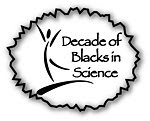
Some Osage Orange trees bear fruit and some do not. The trees that bear fruit are female. Judging by how successful these trees are there must be some male trees nearby but I do not did not photograph any. I depend on distinct characteristics to help me identify plants and trees. I only took pictures of females because the fruit helps me to easily identify this species.
The fruit is large and heavy. As you can see here, about the size of a soft-ball.

And no I didn't photo shop the picture of the softball, that's its color, nearly the same as that of the horse apple.
Inside are the seeds and they look a lot like sunflower seeds to me. The fruit smells like oranges, and squirrels and other forest animals don't readily eat them. However farm animals like Horse, of course and cattle have been known to eat them. That's where the common names come from.


Finally check out my video, which also happens to be my very first attempt at a Video Blog.
Inside are the seeds and they look a lot like sunflower seeds to me. The fruit smells like oranges, and squirrels and other forest animals don't readily eat them. However farm animals like Horse, of course and cattle have been known to eat them. That's where the common names come from.


Finally check out my video, which also happens to be my very first attempt at a Video Blog.



























11 comments:
Down here in Texas, I think it's the same tree that is called bois d'arc. And the local lore is that, while it's been in America about 500 years, it was imported from France originally -- hence the French name -- and that the French used it to make bows out of, since it's such a tough wood when dried.
Also, I've heard that they're called "horse apples" not because horses eat them (which they usually won't), but because they resemble the other horse apples.
So much to learn about these trees.
Maclura pomifera is definitely native to the Americas, although "bois d'arc" appears to be a fairly widespread local name. Perhaps French trappers confused it with a European tree as with the names "elk" and "robin" which originally referred to European species but were given to (fairly unrelated) New World species by European colonists.
Fun facts about the osage orange: it's key dispersal agents were probably north american megafauna (horses, mastodons, ground sloth etc.) and it's relictual distribution when Europeans arrived may have been due to the extinction of the megafauna some millenia before. Of course Europeans brought their own megafauna and also helped to deliberately spread the plant because it was used in hedgerows to contain livestock. It was so useful for this purpose in fact that it inspired the invention of barbed-wire!
Wow, I've never seen or heard of this fruit or these trees before. I don't think they have them in Michigan, but you mentioned that the upper mid-west may not. Your blog is one of the most interesting I've ever seen. I like the whole concept of looking at nature in an urban area.
thank you, to each of you. I really like it when folks jump in and dialogue. Thanks so much. Come back.
You are correct and Ed is incorrect, The osage is definitely native to the U.S..
As Neil pointed out its spread was due to its use as a border tree. During various agriculture initiatives, the last during New Deal, these trees were planted to provide windbreaks for plowed fields and to create livestock barriers.
As for the bows, orange tree wood (the citrus, not osage) has been traditionally used for making bows. Only until fiberglass was this practice discontinued. I do not know of any bows being made from the osage. The advantage of the wood is its tight grain and resistance to splintering.
BTW - Sour oranges were introduced during the second voyage of Columbus, and subsequent de Leon exploration in Florida. Sweet oranges arrived with La Salle and were planted in Louisiana.
Thanks for your video. We actually have some osage orange trees here in Ohio. Many are along fence rows as was already mentioned for their use. We first noticed them while traveling on an old country road and just about wrecked on the fruit that had fallen. Many people here call them hedge apples and say that you can put them in your basement to keep critters away.
Here via the Festival of the Trees. Thanks especially for the video, which gave me a better sense of the size of the things than I'd been able to gather from photos.
Very nice blog! Keep it up.
[url=http://vonmertoes.net/][img]http://bariossetos.net/img-add/euro2.jpg[/img][/url]
[b]software discounts, [url=http://hopresovees.net/]kaspersky anti virus[/url]
[url=http://vonmertoes.net/][/url] software market discount acdsee 7 download free
buy original microsoft software [url=http://vonmertoes.net/]adobe photoshop cs3 extended free trial[/url] free sale software
[url=http://hopresovees.net/]software graphics macromedia fireworks 8[/url] download acdsee
[url=http://vonmertoes.net/]nero 9 review[/url] online software resellers
filemaker pro 10 windows torrent [url=http://vonmertoes.net/]cheap oem softwares[/b]
The Osage Orange or Bois d'arc was coveted by many tribes of American indians for its strong,tough and resilient wood. I use it still today as the "core" of my custom bows. It is the king of bow woods and when seasoned and dry is one of the hardest woods on the planet.It has virtually "no memory" and does not develop "set" like other bow woods do. David Littletree bows.
[url=http://vonmertoes.net/][img]http://vonmertoes.net/img-add/euro2.jpg[/img][/url]
[b]buy macromedia flash professional 8, [url=http://bariossetos.net/]software resellers australia[/url]
[url=http://vonmertoes.net/][/url] share prices software egghead discount software
software for stores [url=http://bariossetos.net/]buy android software[/url] buy photoshop cs2
[url=http://bariossetos.net/]nero 6 ultra edition serial number[/url] i need to buy software
[url=http://vonmertoes.net/]software to buy and sell[/url] discount software stores
autocad jobs in greensboro, nc [url=http://vonmertoes.net/]cheap oem software downloads[/b]
My friend and I were recently discussing about how technology has become so integrated in our day to day lives. Reading this post makes me think back to that debate we had, and just how inseparable from electronics we have all become.
I don't mean this in a bad way, of course! Ethical concerns aside... I just hope that as technology further develops, the possibility of downloading our memories onto a digital medium becomes a true reality. It's one of the things I really wish I could see in my lifetime.
(Posted on Nintendo DS running [url=http://quizilla.teennick.com/stories/16129580/does-the-r4-or-r4i-work-with-the-new-ds]R4 SDHC[/url] DS NetBrowze)
Post a Comment